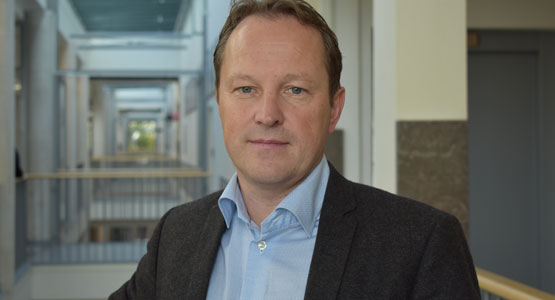MDU research can improve performance in the 5G network
Surfing and looking at films on the telephone is part of everyday life for most mobile users, which places high demands on the performance of the telecommunication systems. Marcus Jägemar, previously externally employed doctoral student in Computer Science, researched into how performance in these systems could be improved, which could be used in the 5G network.

As an externally employed doctoral student, Marcus Jägemar was employed at Ericsson and did part-time research at MDU. In 2011 he commenced his doctoral studentship at MDU, in the ITS-EASY research school, and until the year he defended his thesis he studied the system that ensures that mobile masts can communicate with one another and the subscribers’ mobile phones. Today he is working at Ericsson.
– The driving force in my research was to find ways to improve performance without increasing costs for the operators. The end customer wants to have more bandwidth, we want to see more films on our phones, but we don’t want to pay for it. How can we make it cheaper, but get more? Our findings showed that it was possible, says Marcus Jägemar.
Marcus Jägemar tells us that they worked with problems in an industrial system.
– One of the big challenges was to examine the system at the same time that it was in operation and being used by subscribers. This is a lot different from pure academic research, where you can experiment with the system and do a test several times. For example, we couldn’t close down the system to make tests since it would affect thousands of subscribers, he says.
Reduce the cost, but increase theperformance
In his doctoral thesis, ”Utilizing Hardware Monitoring to Improve the Quality of Service and Performance of Industrial Systems”, the findings were presented, showing for example a number of tools for how to measure performance. Marcus Jägemar and his colleagues also arrived at a number of ways to increase performance in the system at the same time as they could improve Quality of Service (that is, a stated goal that a company has set for the quality of the service, for example that 99 out of 100 calls must go through), without increased costs.
- A circuit board in a telecommunication system constitutes a certain function. For a system to be able to perform several functions at the same time without the functions disrupting one another, several different circuit boards in a system are used. But we arrived at a way that made it possible to have several functions in one circuit board without them interfering with one another. In this way we could reduce the costs and at the same time increase the performance.
Marcus Jägemar appreciated his time at MDU and believes that there is a great deal of industrial expertise and willingness to cooperate among both external partners and other researchers.
- At MDU they’re good at understanding the needs of companies, how academia can help the companies and how the companies can help academia, he says.
